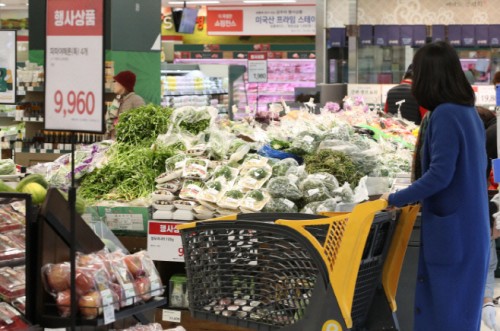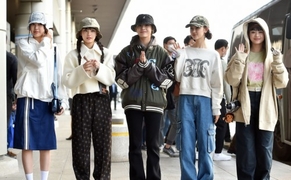 |
| Source: Yonhap News |
AsiaToday reporter Lee Ji-hoon
South Korea’s consumer prices jumped 2.6% in July. This is the same level as in May, which showed the fastest rise in more than nine years. Ahead of the Chuseok fall harvest holiday set for September, prices of livestock and fishery products, petroleum products, as well as home prices increased significantly, increasing the burden on the common people. The government expects inflation to stabilize in the second half of the year, but uncertainty from spiking COVID-19 cases and heat waves as well as oil prices remain high.
According to Statistics Korea on Tuesday, the country’s consumer price index came to 107.61 in July, up 2.6% from a year earlier.
The index has remained under 1% so far this year, but rose to the 2% range for the first time in April with 2.3%, and then jumped 2.6% in May, the fastest rise in more than nine years. Then the figure slowed down for a while in June with 2.4%, but rose again to 2.6% last month. As a result, consumer prices rose more than two percent for the fourth consecutive month in July.
The price of agricultural, livestock and fisheries products rose 9.6% on-year. Due to supply and demand instability caused by heat wave, the price of garlic and red pepper powder rose sharply to 45.9% and 34.4%, respectively. Those of eggs jumped 57% in the aftermath of bird flu. Prices of apples, pears and meat products such as pork and beef rose sharply as well.
Oil prices also surged 19.7% due to the rise in international oil prices. Gasoline, diesel and LPG for automobiles recorded double-digit increases.
Home prices rose 1.4% on-year, marking the fastest on-year gain since November 2017 with 1.4%. Prices of jeonse and wolse rose by 2.0% and 0.8%, respectively.
As a result, prices of daily necessities, including food, clothes and housing, rose 3.4% on-year while core inflation, which shows the basic trend of prices, also rose 1.7% on-year in July, both showing the fastest gain in nearly four years.
The government expected inflation to stabilize in the second half. “The July inflation rate topped 2 percent, led by price gains in personal services, farm and livestock goods, and oil products,” said Eo Woon-sun, a senior statistics agency official. “Inflation in the second half of the year will not be higher than the 2.5% of the second quarter as there is no reason to view the current forecast differently and there is a base effect for last year,” Eo said.
However, surging COVID-19 cases, worsening weather conditions due to heat waves and typhoons, and rising oil prices are upside risks to inflation.
#consumer prices
Copyright by Asiatoday
Most Read
-
1
-
2
-
3
-
4
-
5
-
6
-
7





















